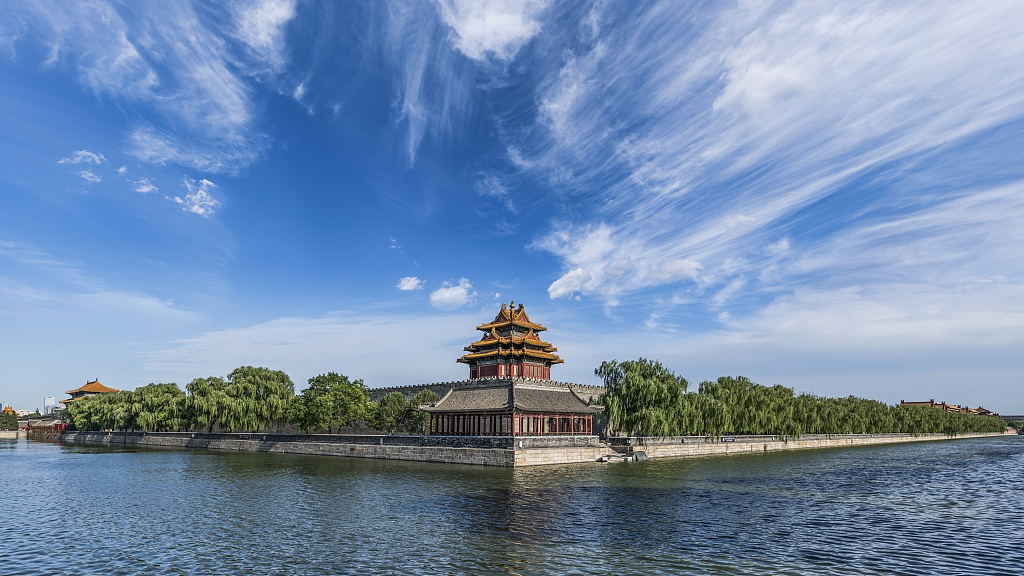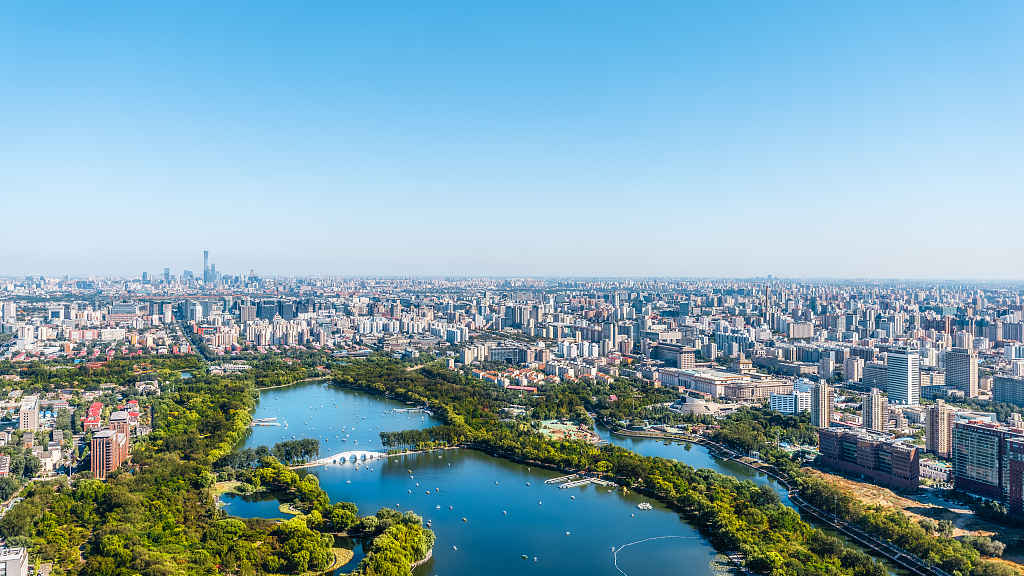China’s Policy Action Improves Air Quality: Should the Rest of the World Follow Suit?

A corner tower of the Forbidden City under the blue sky in Beijing, China.
On June 6, Xinhua News Agency reported significant improvement in air quality in the Yangtze River Delta region. According to the Shanghai Municipal Bureau of Ecology and Environment which provided Xinhua News Agency with data, in 2022 the share of days with severe pollution or worse in the Yangtze River Delta region dropped by over 50 percent year-on-year and the regional air continued to improve – the significant improvement is not limited to the Yangtze River Delta region.
Data released by the Ministry of Ecology and Environment on January 28, show that in 2022 the number of days with good air quality in 339 Chinese cities including cities at and above the prefecture-level was 86.5 percent (representing 316 days) – for the first time, the proportion of days with heavy air pollution reduced to less than 1 percent, reaching 0.9 percent in 2022 – Strongly indicating that China’s fight against air pollution, a canker in the country’s modern history is paying off – a daunting target, achieved through tough measures.
In 2014 Li Keqiang, who was then the Premier of the People’s Republic of China, disclosed at the National People’s Congress session that the government is ready to ‘‘declare war’’ on pollution – The declaration by Li Keqiang in March 2014, which followed the Air Pollution Prevention and Control Action Plan, the country’s toughest-ever Action Plan on air pollution, several months after it was released by the State Council’s (China’s Cabinet) in September 2013 accelerated a major shift in China, which has indeed yielded remarkable results.
In fact, the government has been true to its word – administrative divisions adhered to directives from the Action Plan which laid out specific targets to reduce air pollution and improve air quality by the end of 2017 – with guidance from the Action Plan which ensured strict implementation of major actions, including phasing out outdated industrial capacities, promoting adoption of clean fuels in households and strengthening vehicle and industrial emission standards, China made significant inroads in reducing air pollution and improving air quality – the Asian giant realized major targets under the Action Plan by 2017. To further reduce air pollution and improve air quality, the State Council released a three-year Action Plan on air pollution in 2018 – the roadmap has helped the government to accomplish set targets using technological, legal, economic and administrative means in a coordinated, methodical and targeted approach. Over the last decade, China’s consistent effort to effectively address air pollution has yielded incredible outcomes.
Once plagued with incessant heavy air pollution, China presently experiences considerable improvement in air quality. Compared to 2012, data from the Ministry of Ecology and Environment show that in 2022 average concentration of PM2.5 in major Chinese cities dropped by 57 percent. For example, in Beijing, which experienced serious atmospheric pollution for years, in 2022 the city recorded average PM2.5 concentration of 30 micrograms per cubic meter, the lowest level in almost a decade – In fact, the rapid decline in particulate matter which is seen nationwide, improves the wellbeing of the people. A report from the University of Chicago’s Energy Policy Institute reveals that from 2013 to 2020 the quantity of harmful particulates in China’s atmosphere dropped by 40 percent, which would add about 2 years to average life expectancy if sustained. To put this into perspective, China’s 40 percent decline in 7 years almost equals the 44 percent air pollution reduction in the United States which took more than 30 years to achieve. Within the 7-year period, China helped to significantly reduce average global smog levels.
Does China’s Achievement Offer Lessons to the Rest of the World?

The proportion of days with heavy air pollution in China was 0.9 percent last year, dropping to less than 1 percent for the first time. /CFP
Though challenges remain, the impressive feat attained by China, shows that through well-implemented pertinent measures, air pollution which has deleterious impact on ecosystems and biodiversity could be addressed effectively, even within a short duration. In fact, China’s remarkable accomplishment presents crucial lessons for the rest of the world, especially the Global South, where millions of lives are lost every year as a result of increasing air pollution.
For example in Africa, where air pollution has already claimed millions of lives, the situation is projected to get worse – a joint report (2022) from the United Nations Environment Programme, African Union Commission and Climate and Clean Air Coalition and shows that the continent, will experience approximately 200,000 premature deaths per year by 2030 and 880,000 deaths per year by 2063 as a result of air pollution (outdoor and indoor). However, while the report projects a gloomy future for the African continent, the deplorable situation could be tackled effectively, and improved, particularly if germane policies are well-implemented, just like China has done within a comparatively shorter duration.
However, unlike in the case of China, where the Action Plan in 2013 and 2018 provided clearly defined targets and roadmaps to decarbonise the transport sector, promote clean fuels in the residential sector and strengthen industrial emission standards, phasing out outdated industrial capacities, including small and polluting factories, which eventually has massively reduced air pollution and improved air quality – African countries grapple with similar challenges – but have minimal resources to tackle the formidable challenges.
Highlights from the State of Global Air Quality Funding 2022 show that even though Africa accounts for 26 percent of global deaths attributed to outdoor air pollution, the continent receives a paltry share of total air quality funding from governments, bilateral development agencies and multilateral development banks – between 2015 and 2021 international development funders committed only US$ 403.6 million, representing 3.7 percent of total air quality funding. Clearly, this report together with recent research in the region, show that policymakers and relevant stakeholders in Africa will have to seek redress – provide adequate resources for the first against air pollution – consult broadly, in a problem-solving process before implementing policies, drawing key lessons from China’s recent outstanding achievement to effectively tackle air pollution.
About the author: Alexander Ayertey Odonkor is the founder and leading expert at the Ghana Centre for China Studies, Africa’s preeminent and most comprehensive platform exclusively dedicated to authoritative interpretation of China’s domestic and foreign policies.
Production credits: This commentary is produced by the Ghana Centre for China Studies.
At the Ghana Centre for China Studies we eschew specific policy positions. All positions and opinions expressed in this publication are solely those of the author (s).